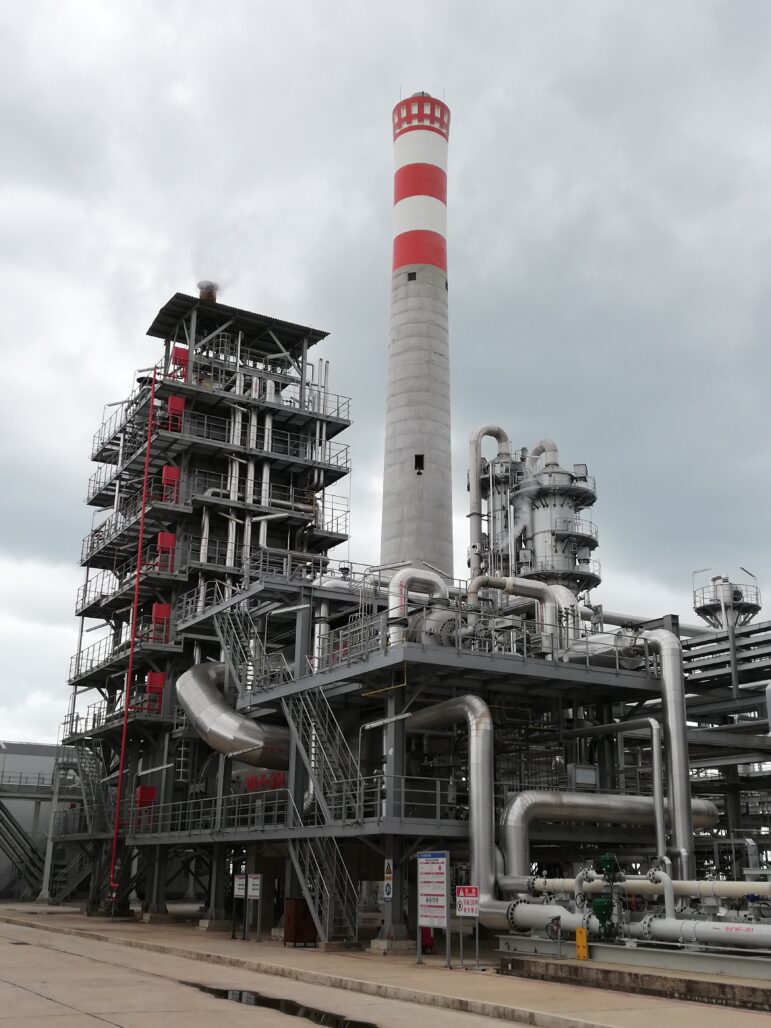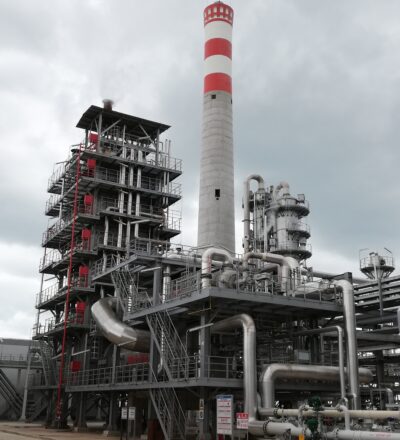Green hydrogen holds a significant promise in meeting the Dutch industry’s future energy demands. Expectations for the role of hydrogen in the energy transition are high. However, the role of ammonia in the hydrogen economy is still underemphasised. What are the opportunities and pitfalls?
Together with our network of experts across the value chain, we shared knowledge and discussed the key opportunities and challenges of ammonia as a hydrogen vector. In this article, Albert Lanser (Duiker Clean Technologies), Kevin Rouwenhorst (Ammonia Energy Association) and Fred Hage (Essent) explore the emerging role of clean ammonia in our future energy landscape, with a particular focus on the hydrogen economy.
Anticipations for the hydrogen economy
The role of green hydrogen in the transition to a net-zero Dutch energy landscape is highly anticipated. However, challenges remain regarding the storage and transport of hydrogen, mainly due to the low energy density of hydrogen gas. These challenges are known as major obstacles to be overcome in the pursuit of a hydrogen economy. Kevin Rouwenhorst (Ammonia Energy Association) explains: “In light of the energy transition, many companies have been looking at ways to electrify and decarbonise their processes. However, the reality is that full electrification is a challenge in the Netherlands due to the volatility of solar and wind energy. Hence, hydrogen and derivatives such as ammonia coming into the equation, next to electricity storage in batteries. As a result, a significant amount of research and policy has been focused on understanding the role of hydrogen and ammonia in the industrial energy transition.”
Fred Hage (Essent) adds: “In the near future, significant amounts of green hydrogen are anticipated to be needed on large scales. A nationwide infrastructure, called the ‘backbone’, is currently being developed to integrate the demand and supply of green hydrogen, linking five industrial clusters. However, as this infrastructure is not expected to be completed before 2030, we also need more decentralised solutions for either importing or producing green hydrogen on a shorter timeline. Hydrogen can be imported through shipments as liquid hydrogen, however, importing the hydrogen over long distances will be expensive and relatively inefficient. A possible solution lies in locally converting sustainably produced ammonia into hydrogen.”
This is part 2 in a series of 3 about ammonia:
Part 1 – Ammonia as a new key actor in energy- and material transition
Part 2 – Ammonia’s opportunities for the hydrogen economy
Part 3 – Clean Ammonia: societal benefits, concerns, and safety demands
The expected role of clean ammonia
Increased demand for hydrogen thus draws attention to ammonia, which can act as a temporary vector for hydrogen, managing its storage, transport and seasonal variations. Kevin Rouwenhorst has profound expertise in the realm of ammonia through his PhD research on plasma-assisted catalytic ammonia synthesis, taking us through the potential and prospects of clean ammonia.
He explains: “Historically, ammonia has been used for many different purposes in many different sectors, of which mainly fertilizers. With an annual production of 185 million tonnes, ammonia is one of the most extensively produced chemicals globally. More recently, as CO2 reduction becomes more urgent and energy demands change, there has been a surge of interest in its potential for alternative applications. At the moment, the marine sector is showing promising signs of adopting clean ammonia as a zero-carbon fuel within a relatively short timeframe – possibly within two to three years.”
Kevin Rouwenhorst continues, “Simultaneously, there’s a growing interest on how ammonia could support the hydrogen economy as a temporary energy vector. Ammonia’s appeal lies in its high energy density, carbon-free nature and the presence of a well-established global infrastructure network that facilitates its transport. While the adaptation of hydrogen is hampered by difficulties related to energy-intensive transport and storage, ammonia shows stark differences. Hydrogen transitions to a liquid state at -253°C, ammonia achieves liquefaction at -33°C. Besides, ammonia can be produced in countries with an abundance of green energy, think of countries in the MENA region, Australia, Brazil, Chile, and Namibia among others, from where it can be directly transported to the Netherlands, for example via Port of Rotterdam. Due to these facts, ammonia as a hydrogen vector, may allow lower costs and more energy efficient transport and storage. After which it can be split into hydrogen on site.”
How to get there: From ammonia to hydrogen

After importing, ammonia can be converted into hydrogen and nitrogen in an “ammonia cracker”. Albert Lanser, representing Duiker Clean Technologies, delves into the technical aspects of converting ammonia to hydrogen on site. “Traditionally, our expertise lies in process- & combustion solutions for refinery applications. However, as it is our ambition to move towards cleaner energies, we are steadily progressing towards crafting scalable solutions and processing units for renewable energies”, Albert Lanser explains. Therefore, over recent years, Duiker Clean Technologies has built extensive and unique expertise in ammonia cracking, based upon more than a decade of experience in the engineering and supply of efficient, durable, and environmentally friendly technologies for stable and reliable ammonia combustion systems. These produce flue gasses with very low NOx emissions, often without the support of additional DeNOx units to comply with legislation.
“This innovation primarily unfolds within the SCO unit (Stoichiometry Controlled Oxidation) and has been technically proven by an integration application in SRUs (Sulfur Recovery Units). From these core technologies, Duiker has developed two distinct ammonia propositions: A2H (Ammonia to Heat), involving the conversion of ammonia into heat for applications in industrial scale steam and electricity generation, and AHC (Ammonia to Hydrogen Conversion), aimed at breaking down ammonia into nitrogen and hydrogen.”
No either or scenarios
Albert Lanser continues: “Through these cracking methods, it becomes economically attractive to import ammonia as hydrogen carrier and convert it through cracking back to hydrogen again. Given the increasing demand for hydrogen, this market has the potential to become a dominant one for clean ammonia. Therefore, the demand for ammonia is said to increase significantly once society and industry recognize and embrace green ammonia as an attractive, relative safe and viable renewable energy source.”
However, it remains important to note that the energy transition does not rest on either-or scenarios. And there are also several pitfalls in the field of ammonia that should be addressed. Kevin Rouwenhorst: “First of all, the majority of ammonia available today is what we call grey ammonia, meaning it is derived from fossil fuels like natural gas without CCS. Some low-carbon ammonia is based on fossil-based production with CCS, whereas renewable or green ammonia is made from solar/wind energies and electrolysis. Such low-carbon and green ammonia technologies hold the key here, as these have the potential to reduce carbon emissions in current ammonia markets and replace fossil fuels in other emerging energy sectors.”
“Global ammonia production is expected to shift towards areas where conditions favour the production of renewable energy. Moreover, new regulations and legislation on ammonia as energy and hydrogen carriers are still needed. To bolster safety measures and enhance capacity for managing the anticipated high influx of imports, it’s imperative to provide the necessary investment, from both research and industry, to assess new technologies while also upgrading current storage and transportation systems,” says Fred Hage. In the end, this can result in a catalytic effect that helps to elevate the hydrogen economy.
Download the Clean Ammonia Roadmap
The industry recognises the potential of using clean ammonia as a low-carbon energy and hydrogen carrier. Although ammonia has been used in chemical industry for nearly 100 years, these new industrial-scale value chains pose new challenges and opportunities. ISPT’s Clean Ammonia Innovation Platform has explored potential market volumes, value chains, and enablers for clean ammonia as an energy and hydrogen carrier. These results are published in the Clean Ammonia Roadmap.
Stay up-to-date on the latest ammonia developments through our LinkedIn-community.
